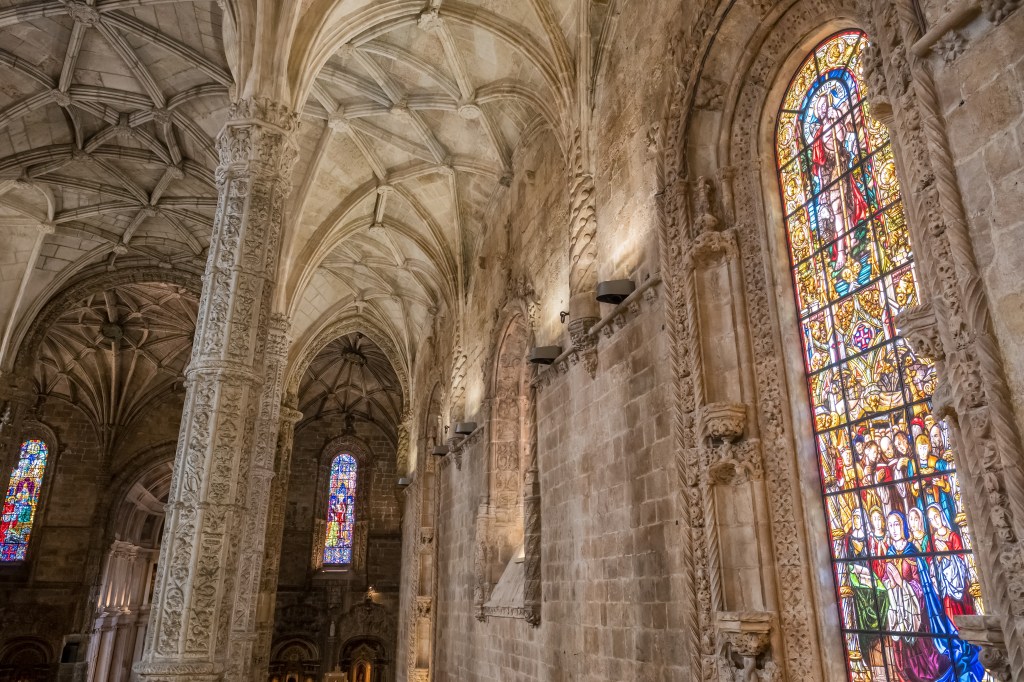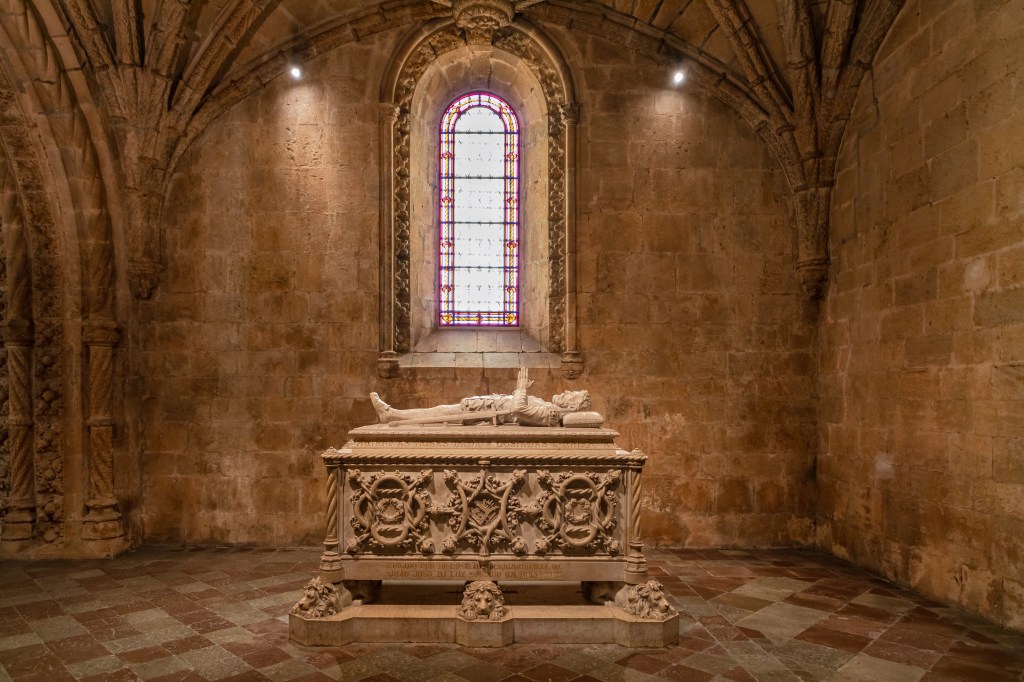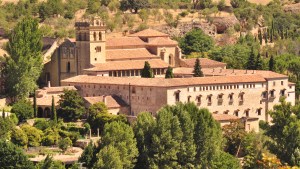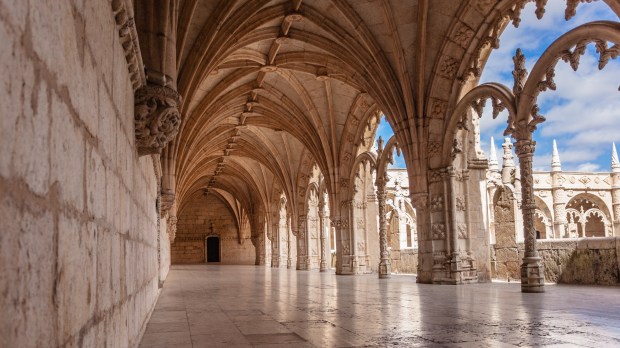The Hieronymites’ Monastery (Mosteiro dos Jerónimos, in the original Portuguese) is quite the Portuguese landmark. Commissioned by King Manuel I in 1501, it was dedicated to the Order of St. Jerome – known as the Hieronymites. This religious order played a crucial role in Portugal’s Age of Discovery, emphasizing contemplation and learning, but it also did plenty of missionary work, founding contemplative monasteries in North, Central, and South America.
The monastery, standing in the Belém neighborhood of Lisbon, is the quintessential example of the Manueline architectural style – a Portuguese sumptuous variation of late-Gothic design, filled with delicate filigree and elaborate vaulted ceilings. As in most Manueline buildings, the façade of the monastery combines religious and maritime symbols, with sculpted figures, ropes, anchors, sea monsters, and some representations of the discoveries brought from the voyages of Vasco da Gama and Pedro Álvares Cabral. Indeed, Vasco da Gama’s tomb is within the walls of the monastery – and it is a remarkable Manueline monument on its own.
However, most of these maritime motives precede Manueline architecture. Before the Hieronymites got there, an old church and hospice where sailors were cared for already existed in the same spot – the church of Santa María de Belém, ran by the Orden de Cristo, the former order of Knights Templar as it was reconstituted in Portugal after its papal suppression in 1319.

Over time, and mostly due to political and religious turmoil, the monastery’s purpose changed: During the 19th century, when religious orders were suppressed in Portugal, it was transformed into a school. Years later, it housed the National Archaeological Museum.

In 1983, the Mosteiro dos Jerónimos was designated as a UNESCO World Heritage Site, acknowledging its historical and architectural significance. One of the most important buildings in the country, the monastery complex also includes the Maritime Museum, which highlights Portugal’s maritime history from the Americas to Asia – including the many missionary endeavors of the Portuguese Jesuits in India and Japan.



